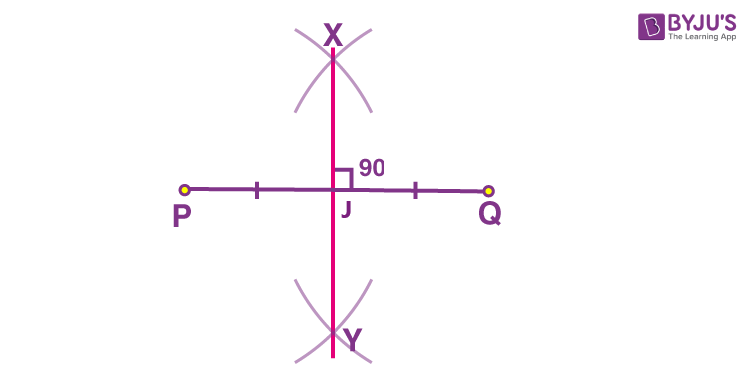3.6 Loci
Loci are the set of points that satisfy a specific condition or rule. They are used to describe the path traced by moving points under given constraints in geometry.Key Concepts:
-
Definition of a Locus:
A locus is the path traced by a point that moves according to a specific condition or rule. -
Some Standard Loci:
-
Locus of a Point at a Fixed Distance from Another Point:
This is a circle with the fixed point as the center and the given distance as the radius. -
Locus of Points Equidistant from Two Points:
This is the perpendicular bisector of the line segment joining the two points. Perpendicular bisector to a line PQ is a line passing through midpoint of P and Q and perpendicular to PQ.
-
Locus of Points Equidistant from Two Intersecting Lines:
This is the angle bisector of the angles formed by the intersecting lines.
-
Locus of a Point at a Fixed Distance from a Line:
This consists of two parallel lines at the given distance from the original line, one on either side.
-
-
Real-Life Applications:
Loci are applied in navigation, construction, and design to determine paths or boundaries.
Examples:
Example 1: Describe the locus of points equidistant from two fixed points \(A\) and \(B\).
Solution:
The locus of points equidistant from \(A\) and \(B\) is the perpendicular bisector of the line segment joining \(A\) and \(B\).Example 2: Describe the locus of points equidistant from two intersecting lines.
Solution:
The locus of points equidistant from two intersecting lines is the pair of angle bisectors of the angles formed by the lines.Example 3: A point \(P\) moves such that it is always \(5 \, \text{cm}\) away from a fixed point \(O\). Describe and sketch the locus of \(P\).
Solution:
The locus of \(P\) is a circle with center \(O\) and radius \(5 \, \text{cm}\).Example 4: A point \(P\) moves such that it is always \(3 \, \text{cm}\) away from a straight line \(L\). Describe and sketch the locus of \(P\).
Solution:
The locus of \(P\) consists of two parallel lines, each \(3 \, \text{cm}\) away from \(L\), one on each side.Example 5: A point \(P\) moves such that it is equidistant from two fixed points \(A\) and \(B\) and also equidistant from two intersecting lines \(L_1\) and \(L_2\). Describe the locus of \(P\).
Solution:
The locus of \(P\) is the intersection of the perpendicular bisector of the line segment \(AB\) and the angle bisectors of the angles formed by the intersecting lines \(L_1\) and \(L_2\).